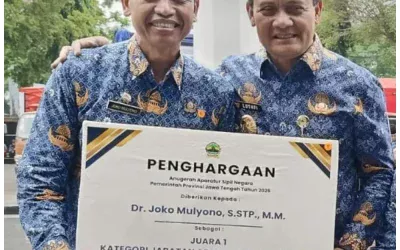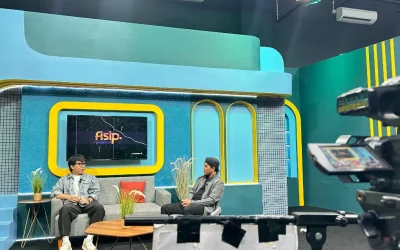(Banner of AIMAN’s Behind The Scene Online Class)
Semarang—Communication Science Department of Universitas Diponegoro in collaboration with Kompas TV to organize an online class entitled Behind The Scene of Aiman: Take A Peek At The Production Process, from research to on-air. Along with Aiman Witjaksono and the AIMAN program team, students learnt how to produce television and digital content.
AIMAN Investigation Program Concept
In session one, Aiman Witjaksono revealed that the main thing needed in investigative journalism is knowledge. The essence of journalism was to convey a message which of course required courage. Courage would be formed when journalists had arguments based on knowledge.
Knowledge was honed by continuously digging up information and data so that later decisions taken would be appropriate and effective. Aiman also emphasized the importance of independence that journalists should have, not a neutral attitude.
“Data is a new oil. People who know about information and data can make the right decisions quickly so that what they do is very effective.
It is important for us to know the future. Do Journalists must be neutral or not in conveying information? They don’t have to. Journalists must be independent,” he said.
AIMAN Program Production Process
A member of the AIMAN program team, Ni Luh Puspa, said that in-depth research played an important role in the entire AIMAN program production process, starting from pre-production to post-production. Several aspects must be considered when conducting research, such as determining what data you want to investigate, making an outline, collecting data, digging for the truth of the data, as well as writing a script, and reporting the results of the investigation.
“The AIMAN program is usually in the form of interviews and that is what is presented to the public. Media is not about right or wrong, but if it is the facts or not. Society has a role to assess and determine. The public also analyzes the information presented by the media,” explained Ni Luh.
She explained that the next stage to be prepared was the script. In contrast to print media, television scriptwriting was based on images so it must be brief and not long-winded.
“It must be short and not long-winded. So, if you are on TV, you must use spoken language, a good and correct language according to the KBBI. Anyway, it should be simple because people watch per second. One piece of news is only 20-30 seconds long, so people may not understand it if it’s long,” She added.
Another Ni Luh colleague, Ana Ariestania, continued. Before the content entered the editing stage, the team would process the vocals and image language first. She emphasized the key to the vocal process, which was to understand how to use sound and reading techniques, as well as breathing techniques.
“Before the editing process, there is a process of vocal processing or dubbing, namely production techniques, where sound is used on TV, radio, and so on. Dubber can be done by the professionals or laymen,” concluded Ana.
Writer: Salsabila Febryanti
Reporter: Almira Khairunnisa
Editor: Annisa Qonita Andini
Source: komunikasi.fisip.undip.ac.id





0 Comments